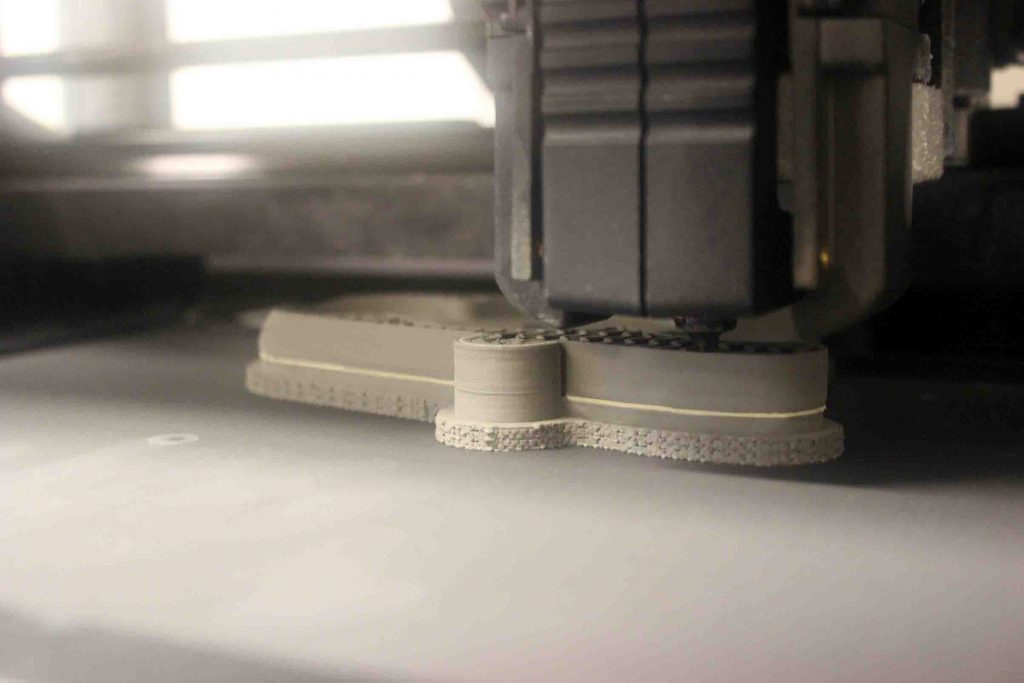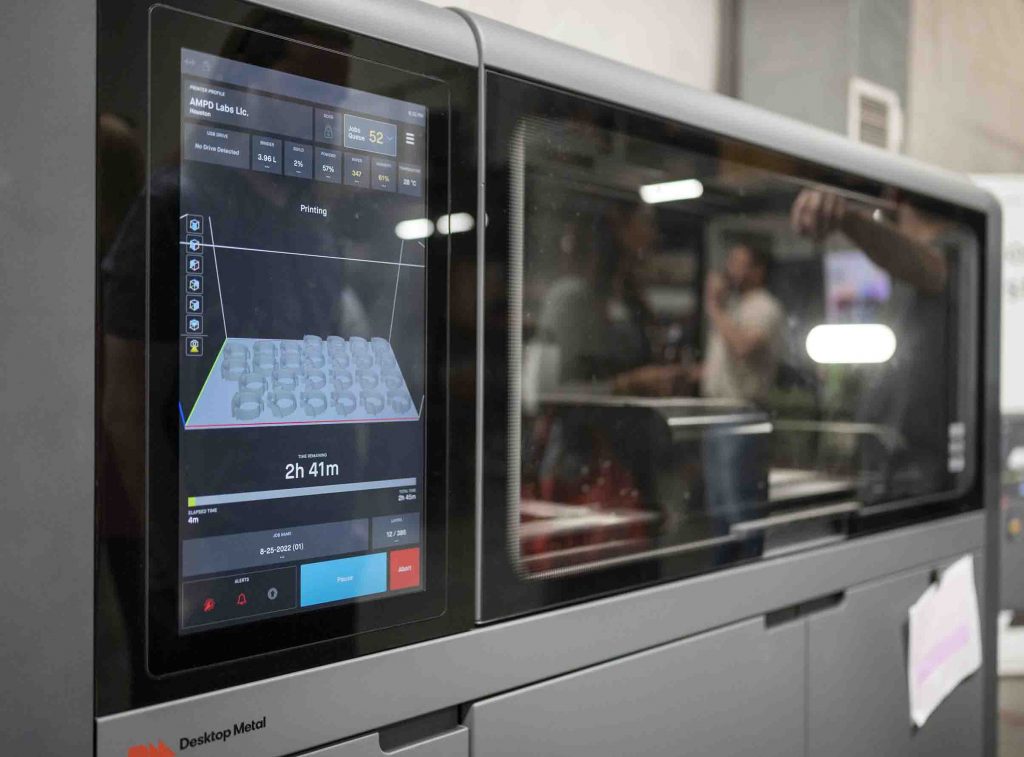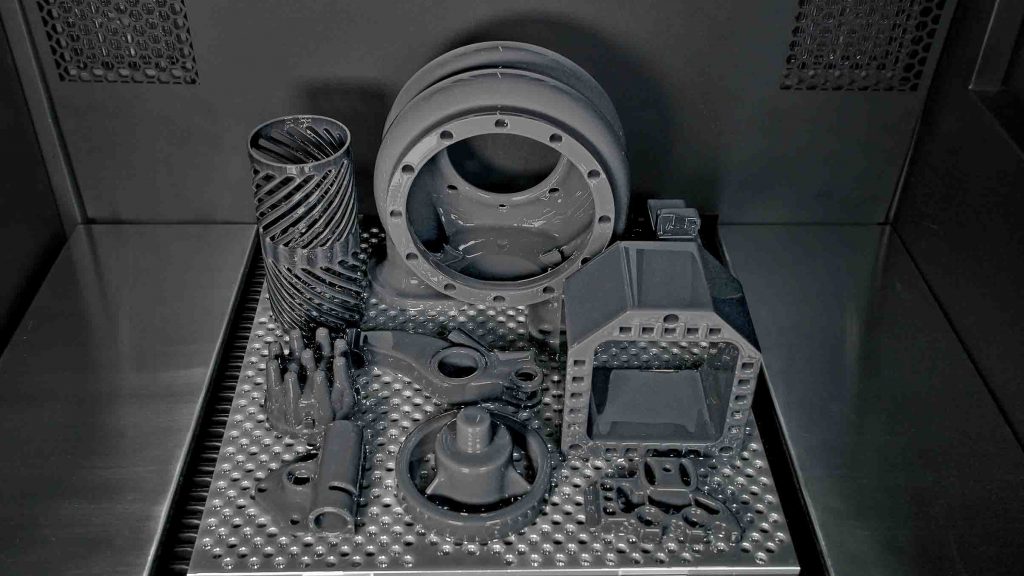Desktop Metal is driving Additive Manufacturing 2.0, a new era of on-demand, digital mass production of industrial, medical, and consumer products. Their innovative 3D printers, materials, and software deliver the speed, cost, and part quality required for this transformation. Desktop Metal is the original inventor and world leader of the 3D printing methods which they believe will empower this shift, binder jetting and digital light processing.
Manufacturers use their technology worldwide to save time and money, reduce waste, increase flexibility, and produce designs that solve the world’s toughest problems and enable once-impossible innovations.
Interview with Eric Bader, Vice President of Desktop Metal EMEA Sales.
Easy Engineering: What are the main areas of activity of the company?
Eric Bader: Desktop Metal is committed to making 3D printing both broadly accessible and capable of true mass production. We provide 3D printing systems with a variety of technologies – easy to adopt Bound Metal Deposition metal 3D printing as well as binder jetting for a variety of materials, from metals and technical ceramics to sand and sawdust. Our polymer brand, ETEC, sells digital light processing (DLP) 3D printers and unique resins such as Elastic ToughRubber and FreeFoam.
E.E: What’s the news about new products?
E.B: Team DM has exciting product innovations across all our brands. In the past few quarters, we’ve announced new advanced parameter options for the Shop System, the world’s best-selling metal binder jetting system. Designed as a complete, easy-to-adopt package to get machining shops started with metal 3D printing, the Shop System is quickly becoming a production workhorse for manufacturers around the world. The Shop System also expanded its capabilities with the commercial release of the Shop System Forust Edition to 3D print wood powder.

The Xtreme 8K from ETEC is the largest size production-grade DLP 3D printer in the world with high-intensity, top-down DLP technology to unlock unprecedented material benefits at incredible speeds. A flexible standout, the Xtreme 8K offers a build volume of more than 66 liters paired with two proprietary, high-intensity light engines that cure a complete print layer with a single flash of UV light. This powerful package enables production-grade printing for diverse and demanding jobs, from very large parts to lots of smaller components.
We also debuted the Figur G15. While not traditional 3D printing, this digital sheet forming technology meets our customers’ needs for digital manufacturing solutions across a range of materials and product types.
E.E: What are the ranges of products?
E.B: Desktop Metal is more than just metal. True to our vision, we offer a range of metal 3D printing solutions for any manufacturer. From the Bound Metal Deposition of the Studio System that makes the technology easy to adopt without metal powder to the Shop System with plug-and-play metal binder jetting adoption or the Production System for metal 3D printing that scales to the quantities and cost competitiveness of traditional manufacturing processes.
Because binder jetting is a material-flexible technology, we also have systems that can also binder jet technical ceramics, upcycled waste materials like sawdust, or sand. Team DM brand ExOne is a world-leader in foundry 3D printing solutions with some of the most popular binder jetting machines for creating foundry molds and cores.
Our polymer division supports not only industrial applications with the ETEC brand, but also dental and medical devices with the Desktop Health brand. We believe the future of healthcare is personal, and Desktop Health creates the technology that drive that revolution.
E.E: At what stage is the market where you are currently active?
E.B: The Desktop Metal team consists of some of the leading additive manufacturing and materials experts. Because we work with such a wide variety of customers across most industries, we collaborate with companies at every stage of the additive journey. From getting our easy-to-use systems set up in universities to train the next generation of additive innovators to installing production lines of multiple machines at major OEMs.

Our portfolio of machines includes the InnoventX, the most researched binder jetting machine in the world. Partnering with our customers and research institutes around the world is helping to further advance metal 3D printing by advancing understanding of the technology through data and instilling confidence in the new production method.
Team DM brand Aidro has more than 40 years of experience in the design and production of valves and manifolds, as well as hydraulic and fluid power systems using both traditional and additive manufacturing methods. The company recently became the first manufacturer to earn DNV’s AM manufacturer certification for binder jetting technology. The qualification is an important step for mission-critical industries to move into a new era of digital manufacturing.
E.E: What can you tell us about market trends?
E.B: The past few years have been disruptive for many industries – from supply chain disturbances to labor shortages – and many manufacturers are looking for technologies that can help mitigate those risks. At the same time additive manufacturing is increasingly viewed as an essential investment in the future of production at many facilities, so we see a demand for reliable systems that make on-demand manufacturing a reality.
Our S-Max sand 3D printers, for example, are helping foundries automate a traditionally labor-intensive process at a time when skilled labor is increasingly hard to find. And the return on investment on these machines is so high that a majority of ExOne machines are installed with repeat customers, showing that those who invest early reap the rewards of agile production to continue growing.
Flexible production is another key trend for many manufacturers, as they seek to respond to the fast-changing needs of the market to meet evolving customer demands. Printing directly from a CAD file without the need for hard tooling or a complex machining setup means manufacturers can create a flexible production schedule with easy changes as needed. What’s more, with binder jetting technology, the build area can be nested with many parts – in series from the same geometry or mixed batches of parts. This provides manufacturers with the ultimate production flexibility to meet the changing demands of the marketplace.

E.E: What are the most innovative products marketed?
E.B: As additive technologies become more established in the marketplace, material revolutions are becoming the next frontier of innovation. The power of our 3D printing hardware is enabling material advancements that unlock unprecedented properties and performance.
On the metal side, now that stainless steels have been “mastered”, work is pushing ahead to qualify reactive materials like titanium and aluminum on production capable machines. Technical ceramics are also gaining traction with binder jetting, as the thermally-neutral process is ideal for processing materials like silicon carbide into complex shapes.
For our polymer division, advanced levels of energy density in high-powered hardware is enabling breakthroughs in durable, resilient, and high-performance long-chain photopolymer networks. These new resins mean companies can 3D print lattices and other light weighting geometries in materials like elastomeric rubbers or foams.
And Desktop Health is bringing material innovations directly to consumers with breakthroughs like Flexcera for the fabrication dentures with ceramic-like strength. Functional dental prosthetics can be 3D printed in one of the strongest dental resins on the market—3X more resistant to fracture and 2X more resistant to moisture vs. leading competition.
These material innovations pair with our leading additive manufacturing hardware to provide innovating production solutions to a range of manufacturers.

